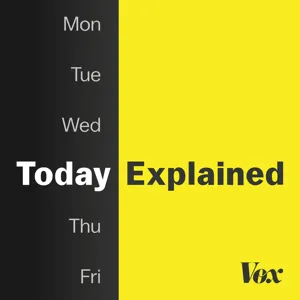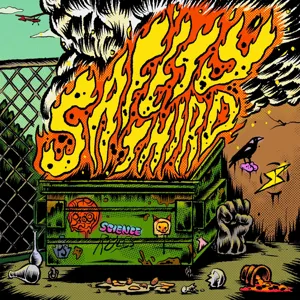Podcast Summary
History of Music Sampling Lawsuits: Understanding the legal implications of music sampling is crucial for artists to avoid costly lawsuits.
The Capital One Venture X Card offers unlimited 2X miles on every purchase, along with premium travel benefits like airport lounge access and a $300 annual credit for bookings. Meanwhile, the discussion on the podcast touched upon the history of music sampling, specifically the case of Bridgeport suing artists for sampling their music. The owner of Bridgeport, Armin Baladian, had amassed a large number of music copyrights and would sue anyone who sampled those songs. This led to a significant number of lawsuits against various artists, including Jay-Z. While the podcast discussed this topic in a lighthearted manner, it highlights the importance of understanding the legal implications of sampling in music production.
Music Sampling: Creativity vs Ownership: Music sampling is a contentious issue where creators use existing music to make something new, with Bridgeport Music leading lawsuits against artists. It raises questions about creativity, ownership, and royalties for artists like Clyde Stubblefield.
Music sampling, which involves taking a piece of an already established piece of music and using it to create something new, has been a contentious issue in the music industry. Bridgeport Music, a corporation that owns copyrights to various songs, has been known for suing artists who sample their work, even if the sample is unrecognizable. This practice has sparked debates about creativity, ownership, and the role of corporations in the music industry. For instance, James Brown's drum break from the song "Funky Drummer" has been sampled over 2,700 times, and Clyde Stubblefield, the drummer on the recording, has not received any royalties. However, some argue that sampling helps bring obscure artists into the spotlight, as seen with The Winstones' "Amen Brother" and its iconic "Amen Break." Ultimately, the issue highlights the complexities of copyright law and the ongoing tension between creativity and ownership in music.
Exploring the History and Impact of Sampling in Music Production: Sampling is a crucial element in music production, enabling artists to reuse and transform existing sounds to create innovative compositions. From the Amen break to modern digital audio workstations, sampling has shaped music genres and influenced countless hits.
Music production involves sampling and reusing existing sounds to create new compositions. This practice has a rich history, with seminal breaks like the Amen break from "Amen, Brother" by The Winstons giving birth to genres like drum and bass and jungle. Producers like LL Cool J and Metallica have also used samples extensively in their hits, such as "Mama Said Knock You Out" and "Sample and Kill," respectively. The first tools for sampling were rudimentary devices like the Mellotron, which allowed users to record and manipulate short snippets of sound. Today, sampling is a ubiquitous aspect of music production, with digital audio workstations offering advanced capabilities for manipulating and layering samples. Overall, sampling is an essential aspect of music creation, allowing artists to build on the work of their predecessors and push the boundaries of what's possible in their own compositions.
Birth of Electronic Music from Sound Manipulation: Pierre Schaeffer and Pierre Henry pioneered electronic music through sound recording and manipulation, leading to music concrete and influencing artists like Pink Floyd, The Residents, and Silver Apples. Later, magnetic tape and early synthesizers enabled sample creation, shaping iconic pieces like James Tenney's 'Collage Number 1'.
The origins of electronic music can be traced back to the 1940s and the experimental techniques of Pierre Schaeffer and Pierre Henry. They pioneered the use of sound recording and manipulation, leading to the creation of music concrete. This involved recording and splicing various sounds, from everyday objects to music, to create new compositions. Their work laid the foundation for the development of electronic music, influencing artists such as Pink Floyd, The Residents, and Silver Apples. Later, in the 1960s and 1970s, artists began using magnetic tape to create samples, leading to the use of the Melodron and other early synthesizers. This period saw the emergence of iconic electronic music pieces, such as James Tenney's "Collage Number 1," which deconstructed Elvis Presley's "Blue Suede Shoes." The techniques developed during this time continue to influence modern electronic music production.
Exploring Creativity and Innovation in Various Domains: ZigaZoo: A safe and human-moderated community for kids to create and discover trends. Airbnb: A platform for homeowners to earn extra income. Variety Entertainment Marketing Summit: Networking opportunities for industry professionals. Past innovations: Creative use of music concrete in radio broadcasts.
ZigaZoo offers a safe and fun platform for kids to create, share, and discover new trends without the distractions of commenting or text messaging. It's a human-moderated community of real kids, ensuring a positive and authentic experience. Meanwhile, Airbnb provides an opportunity for homeowners to earn extra income by renting out their homes or spare rooms during events or when they're away. The Variety Entertainment Marketing Summit offers networking opportunities for entertainment marketers to connect with industry leaders. Lastly, reminiscing about the past, we discussed the innovative use of music concrete in radio broadcasts, such as Dickie Goodman and Bill Buchanan's flying saucer records, which mashed up popular hits with news reports. These examples showcase the power of creativity and innovation in different domains.
Pioneers of electronic music and hip hop: From the Moog synthesizer team to the Beastie Boys, pioneers like Cool Herk, Marley Marl, and the Beastie Boys revolutionized music through their creative use of technology and sampling in the late 50s to the late 80s
The history of electronic music and hip hop can be traced back to the late 50s and 60s, with pioneers like the Moog synthesizer team and DJ Cool Herk innovating in their respective fields. Cool Herk is credited with starting turntable sampling and creating long drum breaks by combining different records. Marley Marl, a house producer for the Juice Crew, was also a key figure in the early heyday of hip hop, producing hits for artists like Big Daddy Kane and Eric B. & Rakeem. The Beastie Boys, known for their intricate sampling techniques, reached their peak with albums like Paul's Boutique and Hey Ladies, using dozens of samples before the era of paying permission rights. Pioneers like these laid the foundation for the genre, with their creativity and innovative use of existing music.
Landmark lawsuit on music sampling sets new precedent: The use of copyrighted material in music production transformed from artistic expression to business matter, leading to increased scrutiny and potential legal repercussions for improper sampling.
The use of copyrighted material without permission in music production, especially in hip-hop, transformed from an artistic expression to a business matter after a landmark lawsuit in the early 1990s. The case involving Warner Brothers and the song "Alone Again (Naturally)" set a precedent, leading to increased scrutiny and potential legal repercussions for music companies and artists who sampled without proper clearance. This shift brought about the idea that original artists deserve compensation for their work being used, and it is essential to follow the rules to avoid legal issues. The debate continues on the balance between artistic freedom and respecting intellectual property rights.
Using copyrighted music in projects can lead to financial obligations and legal consequences: Failure to obtain proper permissions for using copyrighted music can result in significant costs and legal issues. Creativity platforms for kids offer safe spaces for sharing content, and homeowners can earn extra income by renting out properties on Airbnb.
Using copyrighted music in creative projects can lead to significant financial obligations. These obligations can include paying royalties to both the copyright owner of the composition and the owner of the specific recording. The costs can grow as sales increase, and failure to obtain proper permissions can result in legal consequences. For example, in the music industry, artists like Vanilla Ice and MC Hammer have faced issues with sampling without permission. Moreover, the rise of social media platforms and sharing content online has led to new opportunities for kids to express their creativity, such as Zigazoo, which is a safe and human-moderated social media network for kids to upload and share content. On a different note, homeowners can also make extra money by renting out their homes or spare rooms on Airbnb during events or tourist seasons. This can provide an additional income source or help cover bills. Lastly, Variety's annual entertainment marketing summit is an excellent platform for professionals in the entertainment industry to connect and learn about the latest trends and strategies in marketing and advertising. The event takes place at the Beverly Hilton Hotel in Los Angeles on April 24th.
Navigating the Legal Complexities of Sampling and Covers in the Entertainment Industry: Three notes aren't enough for copyright infringement, but sampling laws remain unclear, making networking and learning from industry experts crucial for understanding the evolving landscape.
The entertainment industry is full of innovative uses of samples and covers, but navigating the legal complexities can be challenging. At an upcoming industry event, attendees will have the opportunity to learn from leaders in entertainment, including discussions on sampling and copyright law. One famous case, Newton v Diamond, established that a brief composition consisting of three notes is not enough to sustain a claim for copyright infringement. However, the use of samples and covers continues to evolve, with artists like Danger Mouse and Dr. Dre pushing boundaries through mashups and original productions. While it's generally allowed to cover songs without paying the owner of the composition, as long as the cover is faithful and not altered, the legal landscape is still unclear for some uses of samples. Attendees at the event can expect engaging conversations on these topics and valuable networking opportunities.
Decades of Music Confusion and Fair Use: During confusing decades, fair use allows creators to use small portions of copyrighted material for commentary, criticism, research, teaching, or news reporting without permission.
During certain decades, like the 50s and 60s, multiple artists would release similar songs at the same time, leading to potential confusion. However, with the concept of fair use, creators in the United States have the right to use small portions of copyrighted material for commentary, criticism, research, teaching, or news reporting without acquiring permission. For more information on music sampling and its history, check out whosampled.com. Now, for something completely different, a listener named Tom shared a family story about being mistaken for spies in France. In the 1980s, Tom's parents were arrested and detained on suspicion of being New Zealand counter-terrorists during the Rainbow Warrior incident. Separately, a nun named Sister Marie and her fellow nuns were accused of being spies by the Nazis during World War II and were taken to a POW camp. Despite the dangerous circumstances, Sister Marie refused to cooperate unless her nuns were released as well. Eventually, they were freed and continued to help the elderly and shelter members of the French resistance.
Sharing experiences and addressing concerns: Unique stories bring appreciation and understanding. Addressing concerns in safe spaces fosters connection and security.
Families have unique stories and experiences, and sharing them can bring appreciation and understanding. Tom R. shared a heartfelt message about his 98-year-old aunt, a nun who dedicated her life to the convent, and expressed concerns about safety in France. Meanwhile, Zigazoo offers a safe social media platform for kids to share their creations, addressing concerns about online safety. Additionally, the Variety Entertainment Marketing Summit provides a platform for entertainment industry professionals to connect and learn from each other. Discover card offers financial security and personalized customer service, making everyone feel special. These stories illustrate the importance of sharing experiences, addressing concerns, and making everyone feel valued.






